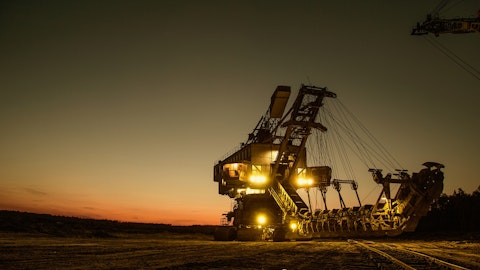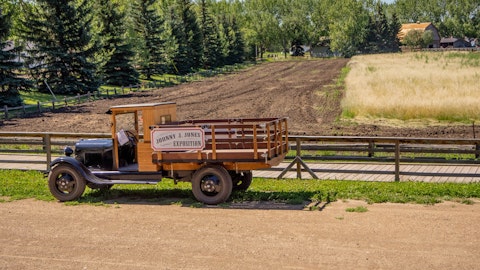Robert Jornayvaz: I was just going to say, the reason we called it out in the initial part of our remarks is we own the fact that, that well failed and the replacement well is actually being constructed as we speak. But it had a major impact to our production profile. And correcting that mistake will have an immediate impact once it’s down completed and commissioned, which is expected to occur in the next 60 to 90 days.
Lucas Beaumont: Great. Thanks. So I mean – and I guess just then you gave a lot of good color on sort of where the projects are kind of in the press release. So I mean, you have kind of key milestones kind of coming up sort of here in March in the second quarter and the third quarter. So I mean, could you just kind of help us understand how you feel about your confidence in sort of hitting the timing there and around the completion dates? And is it – I mean, is there any risks? Or how does that kind of stand currently?
Robert Jornayvaz: Well, in order to mitigate the risk of the redrilling of that well, we completely changed the drilling design we brought on a whole new team to drill the second well. Unfortunately, the permitting took an unusual amount of time, it took us almost a year to repermit that replacement well. And so the good news is it’s fully permitted. It’s actually – there’s a rig on site drilling the conductor pipe as we speak. And so we hope to have that well done and completed by the end of the month and hopefully commissioned by the end of April. And given that, that’s in our largest best brine pool within the entire company structure, being able to put that high-grade brine into our ponds at Carlsbad will have a material impact as we begin the harvest of those bonds.
Lucas Beaumont: And I guess, I mean, if all of this goes to plan, so I mean you said [indiscernible] that you’re expecting a material uplift in the production volumes in the second half. Can you kind of help sort of frame that for us relative to the kind of 90,000 tons in the second half of last year? Is it 10,000 tons this year, 20,000 tons in the second half?
Robert Jornayvaz: Well, in terms of trying to break it down by quarters, is the hard part, given the seasonality in the evaporation cycle. But I want to be clear that we lost somewhere between 75,000 and 100,000 tons from that one big brine pool that we were unable to access still there. And so those tons will be going into our ponds and we’ll begin to harvest those. So I know you’re trying to build a quarterly model, but it basically starts a pinwheel effect, if you will, because we have multiple. As we’ve tried to outline in our IR decks, we’ve got multiple abandoned mines that we have now flooded, and this has given those abandoned mines time for the brine grades to resaturate and build up so that we’re now going to be producing for several years, a much higher brine grade as we just explained from our HB – from the Eddy Shaft project, which has been putting in some of the highest brine grade in our history into our pounds.
So if you could take five minutes and look at our IR deck, and familiarize yourself with the HB pond system, I think it will become more evident to you.
Lucas Beaumont: Well, thanks. And then maybe just lastly, sort of similar following on from sort of the question in terms of the hurdles of the incremental sort of $50 million payment. I mean it sounds like you have a reasonable degree of confidence that, that one will pursue. I mean, could you talk a bit more about sort of what the contingent sort of hurdles are on the further $100 million that would need to kind of happen over time?
Robert Jornayvaz: Well, there’s really no hurdles. Once they get their next drilling island approved, then there really aren’t any hurdles. It’s described as contingent payments as they drill off those drilling islands. And so it all starts happening very quickly once they get that first drill island approved, and we are now very much aligned in terms of them receiving that drill island, and I would just take you back to looking at Exxon’s comments and look to Exxon for guidance as to their importance and the significance of the Delaware Basin in terms of where Exxon believes are going with their production. So that’s more of an Exxon question.



